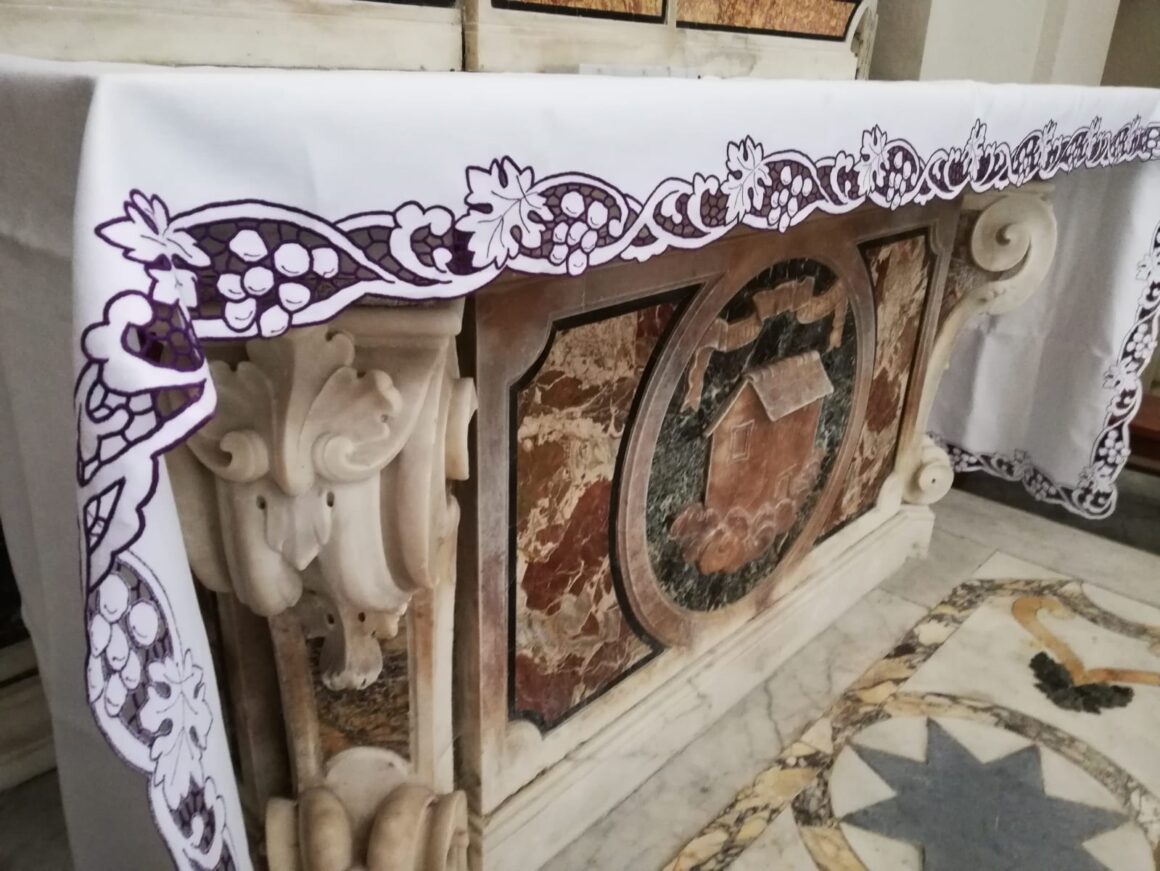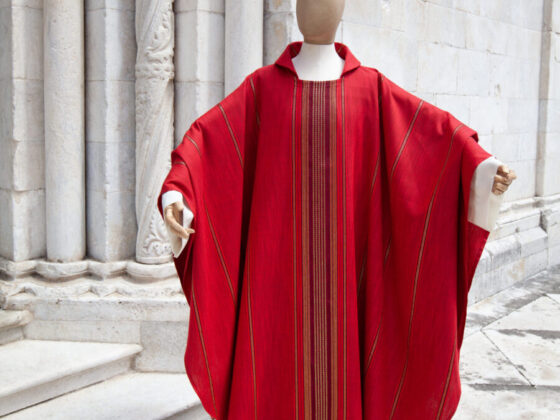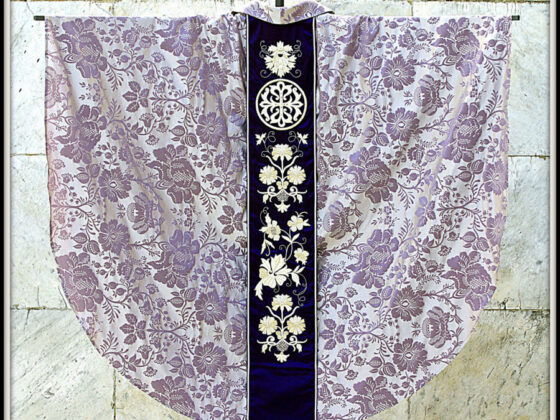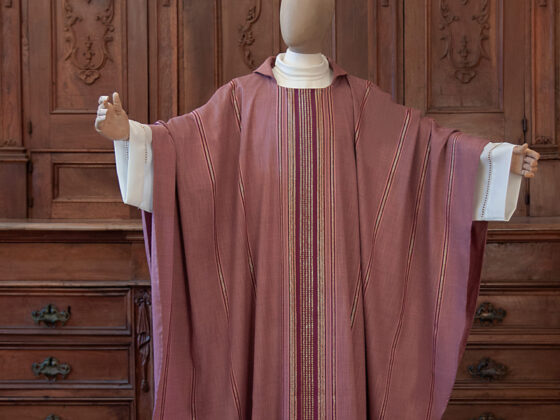Ash Wednesday marks the beginning of Lent and falls on the Wednesday before the first Sunday of Lent. It is a movable date that depends on the day of Easter. What are the origins of Ash Wednesday, why is the head sprinkled with ashes, and what vestments should be worn on this day? Let’s find out together!

The origin of Ash Wednesday
Ash Wednesday has very ancient origins. It was the celebration that marked the beginning of the penitential journey for those who would receive absolution for their sins on Holy Thursday. At that time, confession was still a public act rather than a private one, and it was a unique event rather than an experience that could be repeated anytime, as it is today.
On the morning of Ash Wednesday, penitents would present themselves to the priest, confessing their sins. As a first act of initiation into repentance, they were sprinkled with ashes. Over time, the imposition of ashes became a practice extended to all the faithful.
Additionally, in the 7th century, Pope Saint Gregory the Great introduced mandatory fasting, emphasizing the penitential and sacrificial nature of this day. For this reason, Ash Wednesday was also called caput ieiunii (“beginning of the fast”) or caput Quadragesimae (“beginning of Lent”).
These four engravings from a Roman Pontifical printed in Venice in 1561 depict the imposition of ashes on the faithful and the expulsion of public penitents.

What do the ashes symbolise?
Le ceneri hanno due significati:
1) The Weak and Fragile Human Condition
Many passages in the Bible use the word “ashes” in this sense. In Genesis, Abraham addresses God in the famous dialogue about Sodom and Gomorrah, saying: “See how I dare to speak to my Lord, I who am dust and ashes” (18:27). In the Book of Wisdom, life is described as “brief and sorrowful […] once extinguished, the body will turn to ashes, and the spirit will dissolve like light air.” (Wis 2:3). Similarly, in Job, chapter 30, the prophet, lost in despair and recognizing the profound limitations of his existence, declares: “He has cast me into the mire, and I have become like dust and ashes.” (Job 30:19).
This interpretation of ashes is also found in the verse the priest recites while sprinkling ashes on the faithful’s heads: “Remember, man, that you are dust, and to dust you shall return.” The phrase serves as a reminder of life’s brevity and of the transient nature of human existence, urging one to seek what is truly essential.
When placed in the context of its original Gospel passage, this phrase becomes even more revealing. After Adam and Eve’s grave sin, as told in Genesis, God warns Adam with these words: “By the sweat of your brow you shall eat your bread until you return to the ground, for you are dust, and to dust you shall return.” (Gen 3:19).
2) The Visible Sign of the Faithful’s Journey of Repentance
Once again, let us turn to the Holy Scriptures to better understand its meaning. One of the most well-known passages is the conversion of the people of Nineveh after Jonah’s warning about the city’s destruction by God:
“The people of Nineveh believed God; they proclaimed a fast and put on sackcloth, from the greatest to the least. When the news reached the king of Nineveh, he rose from his throne, took off his royal robe, covered himself with sackcloth, and sat in ashes.” (Jonah 3:5-9)
Similarly, in the Book of Job, it is written:
“Therefore I retract my words, and I repent in dust and ashes.” (Job 42:6)
Finally, in the Book of Judith, the Israelites cry out to the Lord to spare them from Nebuchadnezzar’s commander, Holofernes:
“Every Israelite man, woman, and child who lived in Jerusalem prostrated themselves before the temple, sprinkled ashes on their heads, and, dressed in sackcloth, lifted their hands in prayer to the Lord.” (Judith 4:11)
This interpretation of the symbol of ashes aligns with the phrase “Repent and believe in the Gospel,” which came into use after the Second Vatican Council and is also recited while ashes are placed on the forehead. These words are taken directly from the Bible, specifically from the Gospel of Mark (1:15).
This passage describes the beginning of Jesus’ public life. His message is powerful and direct: repent, change your ways, let yourself be transformed, embark on a new path, and do so by believing in the Gospel. This means believing in Jesus’ works, following His commandments, imitating His actions, and putting His teachings into practice.

The vestments worn during Ash Wednesday
Ash Wednesday thus marks the beginning of a special period of introspection and the opportunity for change. In the liturgy, this transition is also reflected in the vestments, which shift from the green of Ordinary Time to violet.
Why are violet vestments worn on Ash Wednesday and throughout Lent? It is interesting to note how a color that was once associated with the power and wealth of kings gradually became a symbol of penance, conversion, and atonement. This shift is partly due to the fact that the Gospels tell us that the soldiers of Pontius Pilate dressed Jesus in a purple robe after He was scourged, mocking Him in front of everyone by calling Him the King of the Jews.
For Christians, the violet of that robe evokes the pain and suffering that preceded Jesus’ journey to Calvary and His death on the cross. Additionally, the association of violet with penance is linked to its perception in religious contexts as a variation of black. Since black has always been connected to mourning and penance, violet naturally took on a similar meaning.

You can learn more about the use of the colour purple in Lent and Advent at this link of our blog.
We wish you a good journey towards Easter, hand in hand with Jesus.
Follow us on Facebook e Instagram.
Arte Ricami
Manufacturers of hand-embroidered sacred vestments





